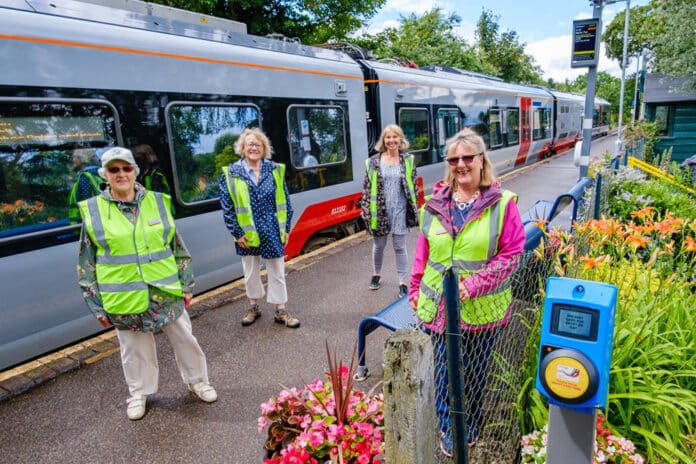Ensuring a thriving future for East Anglia’s rural rail branch lines was the focus at Greater Anglia’s annual community rail conference held last week, building on the successes of recent years.
Community Rail Partnerships, station adopters, local authorities and other organisations from across East Anglia came together with Greater Anglia to discuss how to ensure a bright future for the region’s local rail branch lines, building on the transformational benefits brought by Greater Anglia’s new trains.
They also heard how Greater Anglia’s team of 280 station adopters – volunteers who help to look after their local rail station – continued, even through lockdowns, to improve their local environment, making stations more welcoming ready for the return of passengers.
Adopters have continued to develop station gardens that not only boost wildlife, but human wellbeing too, helping stations to become an even more valuable part of their communities.
Discussions focused on how to help community rail lines recover beyond the pandemic and how to maximise the positive impact of the new trains.
They also covered how community rail partnerships can help strengthen further their links with local communities, involving schools, colleges and local authorities to help bring about positive changes locally, and how to improve diversity and inclusion.
East Anglia’s six Community Rail Partnerships (CRPs), Station Adoption community volunteers, local authorities, Transport Focus and the Community Rail Network – which represents CRPs and promotes community rail at a national level – attended the conference.
Jonathan Denby, Greater Anglia’s Head of Corporate Affairs, said, “Community Rail Partnerships and our station adopters have continued to undertake excellent work throughout the pandemic, with recent initiatives including guides to encourage people to use the railway to access the countryside for walks and numerous biodiversity projects.
“Community rail initiatives help to bring railways closer to the communities they serve, encouraging more people to take the train and supporting local communities by making it easier for residents to travel for work, learning, shopping or leisure and for visitors or tourists to get around, with significant benefits for the local economy.
“Most community rail lines saw significant growth in passenger numbers in the years just before the pandemic and the new, high quality, longer trains being introduced, and already in place on many routes, provide a fantastic opportunity to encourage more people to take the train.
“Indeed, train travel on our community rail routes has already been recovering strongly, as travel restrictions eased and many people holidayed in East Anglia this summer.
“We’ll continue to build on our strong track record of partnership working, which has seen community rail lines become more and more popular with customers, as train services and stations have become more integrated with local communities’ needs, and most routes have benefitted from more frequent services, all year round.”
He added: “A huge thanks to all involved for making the conference such a positive, effective event. We were able to build on our shared desire to ensure our local lines continue to thrive. Key priorities for the next year will include winning even more people to back to train travel, maximising the transformational benefits of the new trains and continuing the sustainable development of our routes in line with local needs.”
To date in Norfolk, Suffolk, Essex and Cambridgeshire, partnership working has helped to boost tourism and local economies; increase passenger numbers and improve health and well-being, through a whole range of initiatives including the production of local area guides, guided walks, special event trains, volunteering initiatives, community art projects, wildlife initiatives, partnership projects to deliver service improvements and station upgrades and wider community involvement schemes.
Photo credit: Greater Anglia/Nick Strugnell



































 0113 2082620
0113 2082620 info@railbusinessdaily.com
info@railbusinessdaily.com 15 Mariner Court, Wakefield WF4 3FL
15 Mariner Court, Wakefield WF4 3FL

